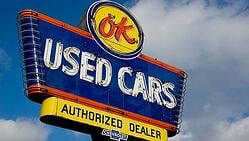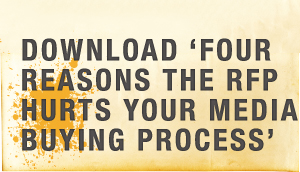Before cars were even invented, the entire media buying process was turning publishers and media reps into used car salespeople. Think about it for a minute: when someone wants to sell a car, either off the lot with a sweet mustache and shoes in need of a shine, or the do-it- yourselfer who’s convinced they can get more money themselves than through a trade, they get the car all prepped and put their listing on Craigslist and Cars.com for all to see. Then what happens? Typically one of two things:
yourselfer who’s convinced they can get more money themselves than through a trade, they get the car all prepped and put their listing on Craigslist and Cars.com for all to see. Then what happens? Typically one of two things:
-
The seller is inundated with interested parties looking to buy their car. Test drive after test drive and appointment after appointment are scheduled so would-be owners can check out this sweet ride and hopefully bring it home to their garage. In this situation the seller is sure to take all the appointments and go on all the ride-alongs. As the seller and would-be owner are cruising the town discussing how great of a vehicle this person could own, the seller is sure to tell the buyer about all the interest he or she has in the vehicle. Because of all this interest the seller is actually thinking about raising the price because the seller is convinced the car is priced too low. At that moment, all negotiations are done, and the would-be buyer knows, if they don’t take the sticker price, or even offer more, this will be their last cruise in this vehicle. The seller will hold the price and could even pit the buyers against one another in an effort to get the most return on the sale.
-
In the second scenario, everything is different. The car is prepped and listed on all the proper sites and channels, but the seller gets no interest. A couple calls come in but no appointments or test drives are scheduled. The seller starts to wonder if there is a buyer out there for this vehicle, and even considers lowering the price. Before that happens, one interested gentleman arrives on the scene with his 17-year-old son, wanting to take a look at the car. They go for a test drive. The son seems somewhat interested but talks about the other cars he and his father have also looked at and mentions he might like the one across town better. What happens next? The smart seller starts talking options and pricing to get this gentleman and his son into this vehicle, and a mutually beneficial negotiation process begins.
This s ituation illustrates the process of media buying. Publishers have inventory and want it sold. They polish up the rest of their publication, station or site with great content and surrounding features to entice advertisers. When media buyers call the publication, station or site with an interested advertiser, a discussion on placement price ensues. If the publisher gets six calls on behalf of the same advertiser, chances are those rates are staying put or the advertiser will be bucketed into a particular category. However, if the one-voice method is used, where an advertiser skips the RFP process and works directly with a media buyer who has their best interest in mind, a mutually beneficial negotiation process can begin, and a win-win-win can be created. The publication wins because they have a new advertiser, the advertiser wins because they are reaching their target audience, and the media buyer wins because they’ve created happy partnerships on both sides of their business.
ituation illustrates the process of media buying. Publishers have inventory and want it sold. They polish up the rest of their publication, station or site with great content and surrounding features to entice advertisers. When media buyers call the publication, station or site with an interested advertiser, a discussion on placement price ensues. If the publisher gets six calls on behalf of the same advertiser, chances are those rates are staying put or the advertiser will be bucketed into a particular category. However, if the one-voice method is used, where an advertiser skips the RFP process and works directly with a media buyer who has their best interest in mind, a mutually beneficial negotiation process can begin, and a win-win-win can be created. The publication wins because they have a new advertiser, the advertiser wins because they are reaching their target audience, and the media buyer wins because they’ve created happy partnerships on both sides of their business.
The question then is, if you’re an advertiser what’s in your best interest? You can either flood the market with media buyers calling all the same outlets and pitting them against each other, or you can adopt the one-voice method. Before you hire that one voice there are some questions you should answer. Once you have those all taken care of, check out the benefits of avoiding the RFP process and your media buys will be less like the used car process, and more of a win-win-win.
RELATED POSTS:
-
Planning an Integrated Advertising Campaign is like Planning a Picnic
-
Does This Make Sense? Advertising Consumption Down But Prices Increase
Scott Olson is the director of marketing at Mediaspace Solutions. His career has spanned marketing positions in the non-profit, software and utility sectors providing various marketing experiences. You can connect with Scott on Facebook, Google+, Twitter or LinkedIn.
Used car sign photo credit: GmanViz/Flickr






